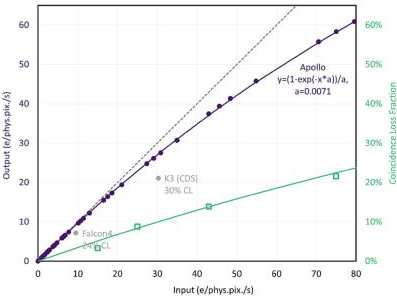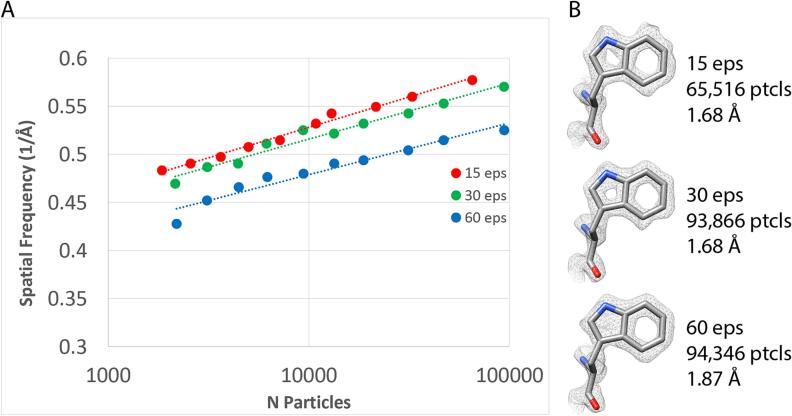
Apollo frees the user from exposure constraints, allowing you to choose the best condition for the experiment, all the while providing minimal coincidence loss.
In order for Cryo-EM to be possible, Electron counting on MAPS detectors requires a sparse beam to illuminate the detector. This lets individual electron events be isolated and counted, removing Landau noise and delivering incredible detective quantum efficiency (DQE).
The wiggle-room lies in the definition of the word ‘sparse’…
For the TFS Falcon, ‘sparse’ means 10 electrons hitting each pixel in 1 second, For the Gatan K3, ‘sparse’ means 30 electrons hitting each pixel in 1 second.
For Apollo, ‘sparse’ means 80 electrons hitting each pixel in 1 second.
Direct Electron set out on a journey in 2016 to design Apollo from the ground up, so that it could squeeze that definition and wring every last drop of signal out of the illuminating beam without sacrificing quantum efficiency. The result is the best cryo-EM camera in the world.
This has groundbreaking implications for sample screening throughput and TEM availability. TEM’s equipped with Apollo can use a beam with 80 eps to illuminate a sample and reconstruct a low-resolution structure rapidly, verifying that the sample is appropriate for a high-resolution experiment.
At the other end of the scale, Apollo’s incredible counting rate means it has much less coincidence loss at equivalent beam sparsity compared to other detectors. When protein structures degrade after seeing a few electrons, that extra burst of quantum efficiency is incredibly important. Users can leverage Apollo’s efficiency to achieve high resolution Cryo-EM structures with a fraction of the number of particles needed by competitors. Again, this has huge benefits for experiment throughput and thus TEM availability.

